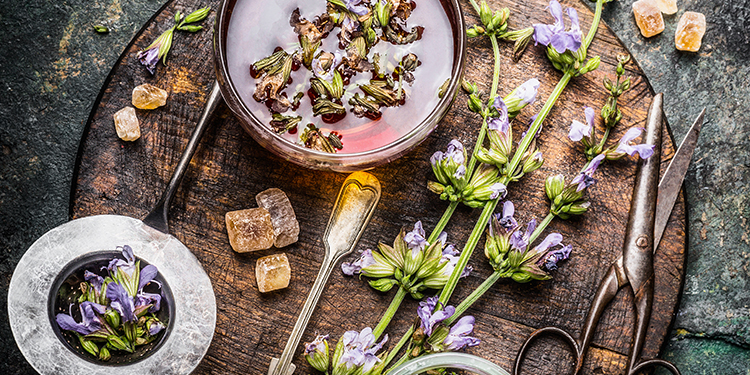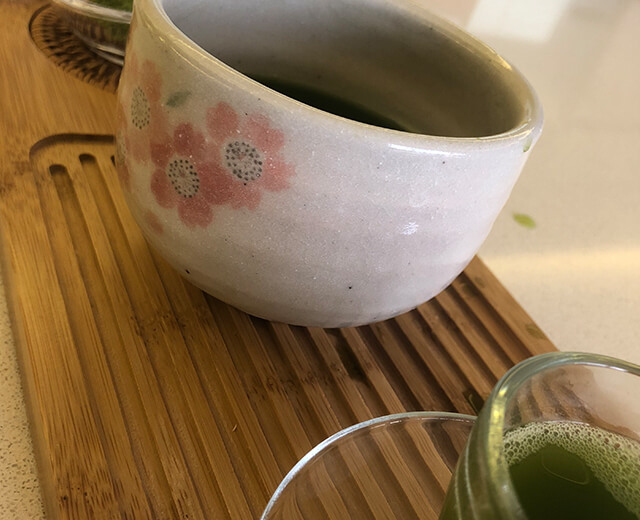

The very act of brewing tea should pay homage to those who make a great deal of effort to plant, take care of and harvest these miracles of nature.That's why, elegance, refinement and respect for nature are characteristics of brewing tea all over the world. The serving method is just as important as the brewing technique. Many factors need to complement each other for tea drinkers to have a pleasant experience.
Today, everyone has their own brewing style. The person who is brewing the tea uses a unique choice and combination of tea, water and teapot as if he/she is creating an art piece, striving to achieve the best result through trial and error. In the end, each cup of tea tells us its own story.
At Doğadan, we have combined the optimum brewing and serving techniques for various teas, hoping to deliver a pleasant tea experience for you to enjoy with your loved ones.
In general, tea can be divided into 2 categories:
1. Teas produced from the Camelia sinensis plant (black, pu’erh, oolong, green, yellow, white teas)
2. Infusions from fruits and herbs, excluding Camelia sinensis
Although the teas in this category are produced from the same plant, they all have unique characteristics depending on their type, climate, soil, harvest, production method and brewing techniques. Let’s take a look at them one by one:
In general, black tea is used in 2 different product groups.
- Loose tea products
- Teapot Bags or Tea Bags
For all black tea varieties, brewing is done with fresh boiled water.
Loose black teas produced in tropical climates (Sri Lanka, India, Kenya, Indonesia, China) should be brewed for 5-7 minutes; if they are served in tea bags, the brewing time is 2-3 minutes.
As the black tea produced in the Black Sea Region of Turkey allows for a longer brewing time and delivers a long-lasting taste, aroma and color after brewing, it is a staple of breakfasts and long conversations.
As a result of the studies we have conducted on Turkish teas, we have found that Doğadan’s loose teas deliver the optimum flavor profile at the 18th minute.
The amount of tea and water plays a key role in brewing.Tea leaves should be able to move freely in the water and all leaves must be soaked at the same time.To give a simple ratio, it is enough to put about 100 ml of water into the teapot for each tablespoon of tea (4-5 grams).During brewing, we recommend the use of soft, bottled and chlorine-free water with a pH of 7-7.5 and of standard quality.Water should be freshly boiled. When the water reaches boiling temperature, wait for 15-20 seconds, put the tea leaves into the teapot by pouring them in a single spot without burning the tea leaves and then make sure that all the leaves are soaked.The teapot should be tightly closed and closing the spout would also help keep the aromatic compounds remain intact, transferring them into the infusion.
Porcelain is the right choice for teapots. Alternatively, you may prefer glass teapots or automatic brewing machines. What you should consider here is that the equipment to be used should be clean and not allow taste and odor transfer (for instance, avoid plastics, etc.).
Teapot bags are designed to provide faster infusion and ease of use. You can get a richer brewed color with a little amount of tea. The smaller the size of the tea leaf, the larger the brewing surface area. Moreover, teas produced in various parts of the world that are different in brewed color, aroma and bitterness (Sri Lanka, Indonesia, India, Kenya, etc.) are also offered in this type of teapot bags. For teapot bags in Turkey, the Turkish black tea is blended with teas with different origins. This allows for bringing the brewing time down to 10-15 minutes, and once the tea is brewed and the teapot bags are taken out, the tea stays fresh for an hour.
The teapot bag concept is not common outside of Turkey. This type of bags (rounded bags) can be brewed in cups for 2-3 minutes just like regular tea bags or in teapots for 5-7 minutes to serve 2-3 people.
Steeping black teas that come in tea bags for 2-3 minutes in freshly boiled water delivers the optimum flavor profile. Since these teas are a mix of teas of various origins that are finely cut, you can quickly achieve the desired taste.
One should keep in mind that the dry tea leaf is a semi-finished product. Therefore, in addition to the quality of tea, using fresh water, a correct brewing technique, appropriate equipment and serving it the way it is supposed to be play a key role in having a delicious tea experience


It is hard to talk about a single brewing and serving method for green tea, which is growing in popularity among Turkish consumers. That’s because there are countless varieties depending on the place and technique of production. For example, the green tea produced in Japan and the green tea produced in China exhibit key differences in flavor and production technique. So, it is not correct to brew them at the same temperature and for the same duration. While the teas produced with the pan-firing technique in China can be steeped at relatively higher temperatures (75-88°C), the teas produced using the steaming technique in Japan give better results at lower temperatures (65-80°C). For green tea varieties, optimum taste can be achieved with different brewing times ranging from 30 seconds to 5 minutes. Moreover, depending on the type of green tea, you can brew the same tea multiple times after the first brewing. With every brew, the tea loses some of its flavor while tannins increase, gradually resulting in a bitter and tasteless tea. The caffeine content also decreases with the number of brews.
White tea is a special tea that is carefully plucked and prepared. In its homeland China, white tea is produced with various special techniques. It is one of the most delicate varieties of teas as it is made from the youngest and most tender hand-picked leaf tips and buds and produced with utmost care with the least amount of processing to preserve its integrity. Boiled water should not be used when brewing white tea. The recommended brewing is steeping the tea leaves at 70-85 °C for 2-5 minutes. And depending on its characteristics and production method, this temperature and brewing time may vary in order to achieve optimum flavor and aroma.
The term "tea”, which is also known as “cha” in some parts of the world, is actually only used to define products made from the Camellia sinensis plant. In addition to this plant, there are countless varieties of herbs that are used for numerous purposes. In various geographies around the world, herbs and fruits have been used and are still used for their therapeutic effects of healing, relaxation, calming and pain relief. They all have unique tastes and aromas. Experts recommend that herbal and fruit teas should be brewed for a short time instead of steeping in boiling water for longer periods. Brewing at 100°C for 5-7 minutes delivers both the desired benefits and the optimum flavor.
Water is what completes this semi-finished product.
In its journey from the garden to the cup, tea has to be accompanied by a few other elements. However valuable tea is on its own, other factors that are involved in the brewing process are equally important to deliver the ideal tea experience.
These factors are:
- Water
- Equipment
- Brewing technique
- Serving method
China is home to hundreds of books on tea with chapters highlighting the crucial role that water plays. Which type of water to use for brewing, the temperature of the water, the bubbles on its surface that help us determine the correct temperature, the sound water makes when it comes to a boil and starts bubbling up... All these details and more constitute only a small portion of the art of making tea.
Below is a brief information as to which type of water to use for brewing the highly popular Turkish tea:
Prefer soft water with low free chlorine and a pH level of 7-8. The water should be freshly boiled and then left for 2-3 minutes to cool down so that it will not burn the tea. During steeping, all the leaves must be equally soaked. Preferably use porcelain or glass teapots for brewing. After 15-20 minutes of steeping, depending on the characteristics of the blend, it is important to serve the tea in a slightly heated or warm cup.
Apart from this general information, it would be more accurate to say: The person who brews the tea masters the process with his/her unique recipe of how much tea to use and when to steep it. Considering the existing constraints (water, teapot, cup), he/she would choose or create the best blend to his/her taste.